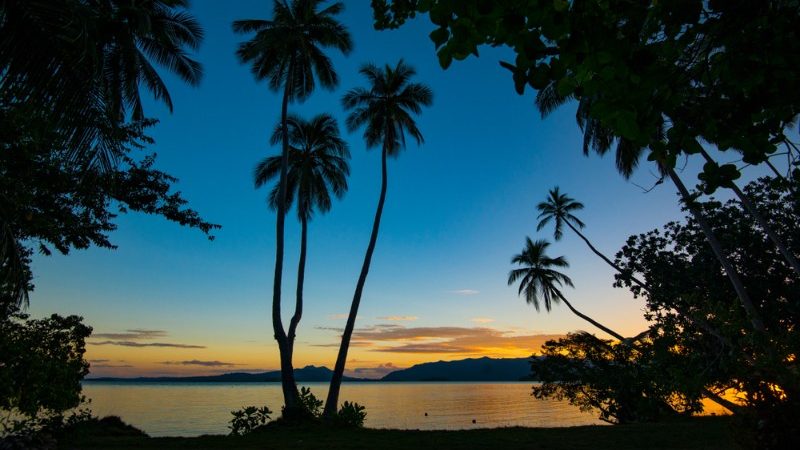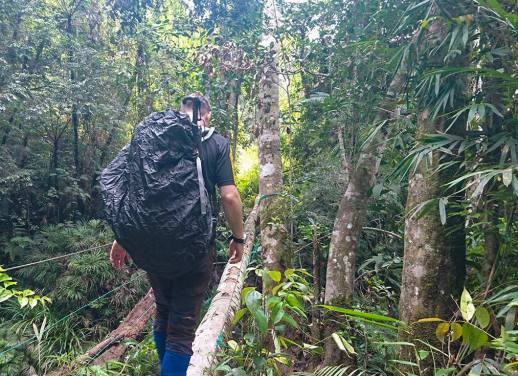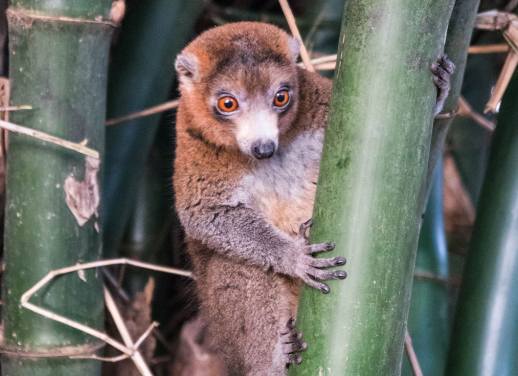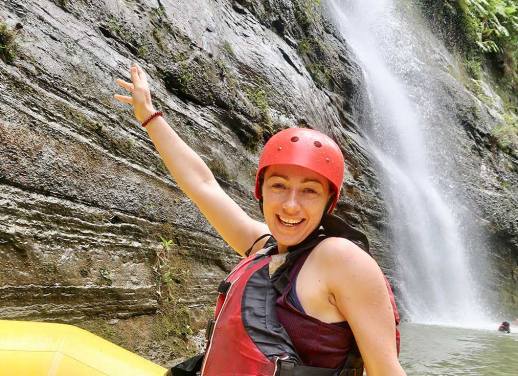The Munda Airport is the cutest little timber shack I’ve ever seen. A small crowd hovers in the shade, waiting for us to disembark so they can catch our plane back to Honiara, from whence we came.
Expecting a slightly more sophisticated system, we step up into the foyer to collect our bags but are embarrassed when we realise that a guy has loaded them on to a trolley from the cargo hold and we must retrieve them ourselves. It’s a simple yet efficient arrangement that opens my eyes to the kind of experience we are about to have on this tiny island in the North West of the Solomons.
A hotel transfer has been arranged and we load our baggage into the car. Again, we are embarrassed when the vehicle pulls up to the Agnes Gateway Hotel exactly one minute, and 300 metres, later. In moments, we are transfixed by a view of the sparkling blue water of the lagoon and enjoying our first beer in Munda on the resort’s new deck.
JOIN US ON AN 8-DAY EXPEDITION IN THE SOLOMON ISLANDS – FULL DETAILS HERE
1. Peter Joseph War Museum
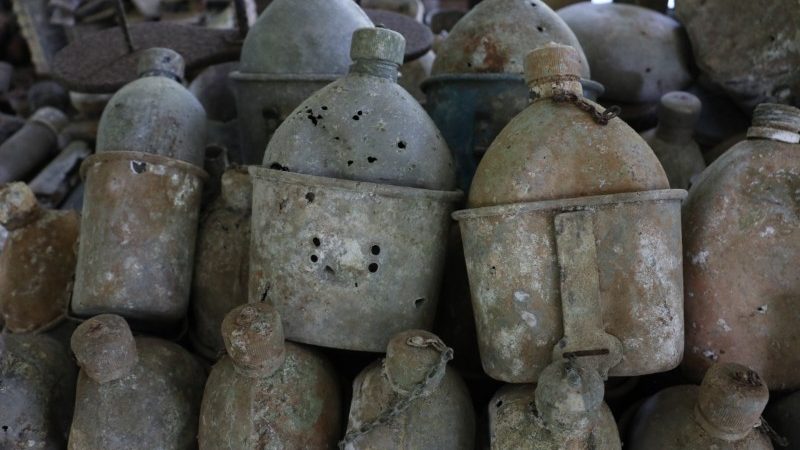
Water canteens at the war museum.
Jungle surrounds the home of Barney Paulsen, owner and curator of The Peter Joseph War Museum. The museum, named after an American whose dog tags were among the first that Barney found in the jungle, contains a rusty assortment of war memorabilia. The tables are stacked with corroded helmets, water canteens, mess tins, cigarette containers, and dozens of weapons; rows of machine guns, machetes, grenades, daggers and even bayonets.
Barney picks up a grenade and pulls out the pin, laughing as I instinctively raise my arms to shield myself from an imminent blast. “They’re old,” he says. “They won’t explode.” Despite the passing of time, I am still nervous so opt to handle one of the less explosive, weapons. It is a rare experience to be in such close proximity to so many dangerous items and I am a little horrified to be handling a Japanese assault rifle. I’ve never had the chance to interact with weapons in this way and it makes the concept of war so much more real for me.
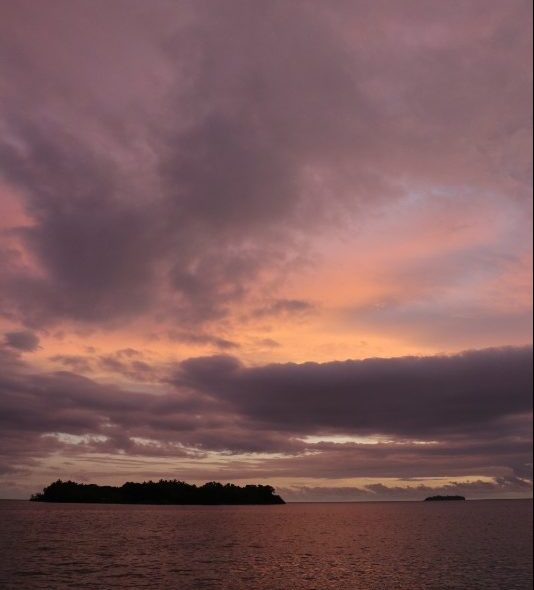
Sunset from Munda.
Munda has a rich wartime history and at every turn there are tales of sunken battleships and full scale battles between the Japanese and US armies. With 26,000 and 1800 losses respectively, it is interesting to note that the number of islander casualties were few. Some locals were enlisted as coastguard lookouts but most ran for the hills, literally, during the fighting, and hid deep in the forest until the war was over.
PERHAPS AN ADVENTURE IN NEIGHBOURING PAPUA NEW GUINEA IS MORE YOUR STYLE? VIEW OUR TRIPS HERE
2. Hopeii Island
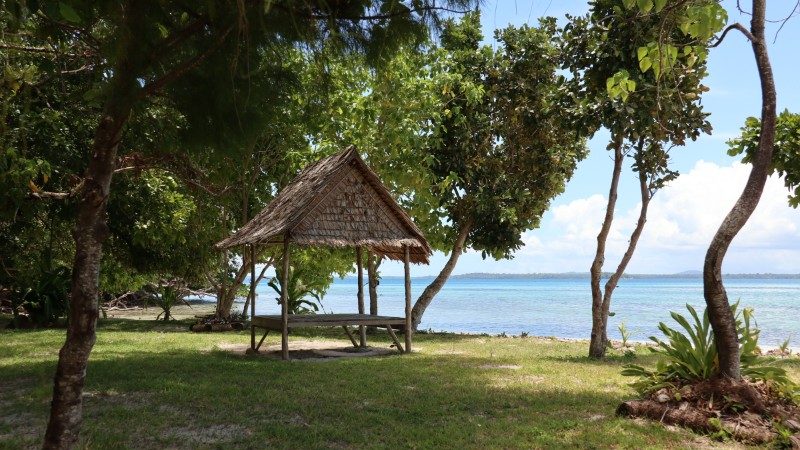
Relaxing on Hopeii Island
Hopeii, known to locals as Picnic Island, is officially owned by the extended Kera family. Locals request permission to visit with their families for special days. Everyone who picnics on the island builds a BBQ on the beach and sits, eating food from banana leaf plates. Life is simple in the Solomons and people take pleasure in their food and other people’s company.
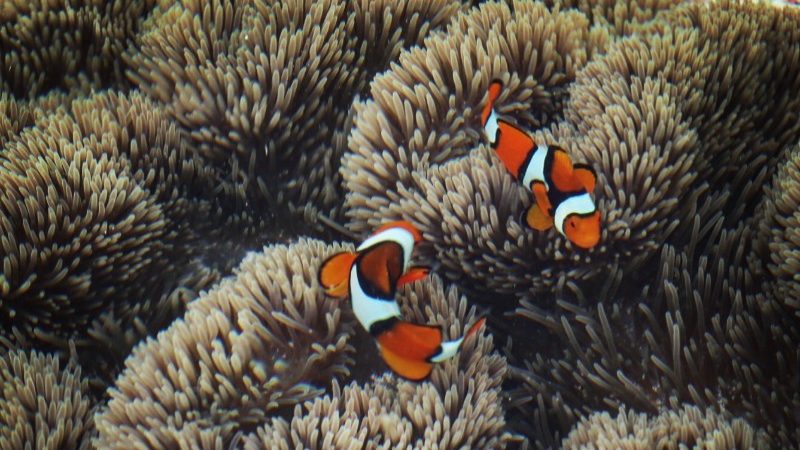
Finding Nemo.
Fishing, snorkeling and diving anywhere around the island is a divine experience.The ocean is so clear it’s like looking through a glass window at the colourful coral forests, starfish and sea anemone that grow on the ocean floor metres below you. Tropical balloon fish swim about the reefs, unperturbed by the intrusion of humans into their environment. Sardines hover in huge schools around the mangroves, flitting en masse as larger fish approach.
EXPLORE OUR FULL RANGE OF EXPEDITIONS HERE
3. Titiru
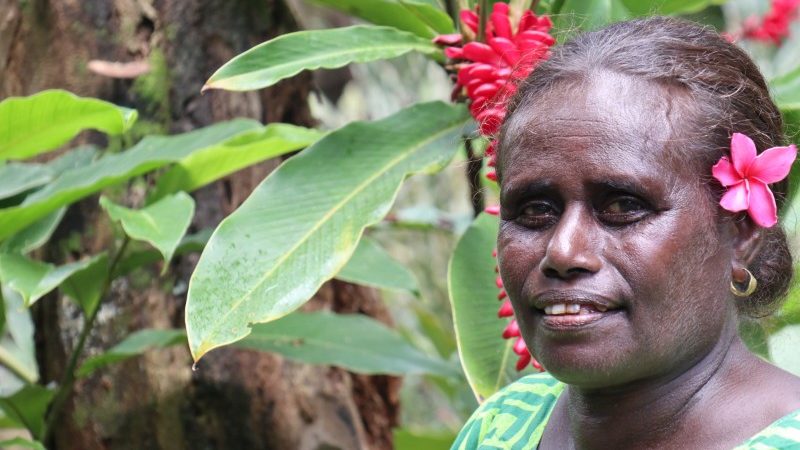
Lucienne, Floral Queen of Titiru
Lucienne, the ‘Floral Queen of Titiru’, has been working on the resort’s organic vegetable gardens and flower beds for seven years. She takes me by the hand and I follow her up the path, coral crunching beneath my feet. Pointing out her tomatoes, spring onions, cucumbers and other crops, Lucienne tells me stories about the process of creating her fabulous flower garden. “I talk to my flowers every morning,” she smiles proudly. A rainbow of pretty native orchid species flourish here, amongst the pink frangipani and vibrant red wild ginger flowers.
RELATED: 10 DESTINATIONS THAT WANT YOU TO BE A BETTER TRAVELLER
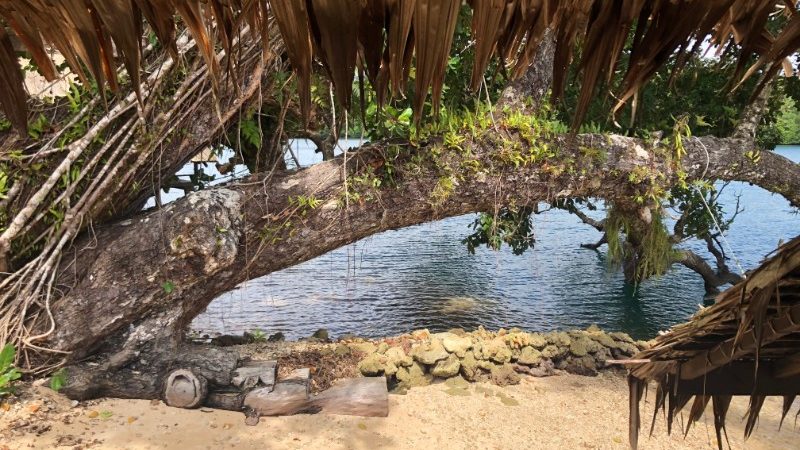
The view from my hut at Titiru ecolodge.
The most beautiful thing about the island of Titiru is its remoteness – it’s a simple place to lie in a hammock and disconnect from the world. The leaf huts are right on the water’s edge and with nothing to see but jungle on the far side of the lagoon, and sunshine reflecting off water, it’s a dream location. A generator provides electricity but you quickly learn to sleep and wake up with the rhythms of nature.
SUBSCRIBE TO INTREPID’S NEWSLETTER FOR TRAVEL TIPS, COMPETITIONS, GIVEAWAYS & MORE
4. Skull Island
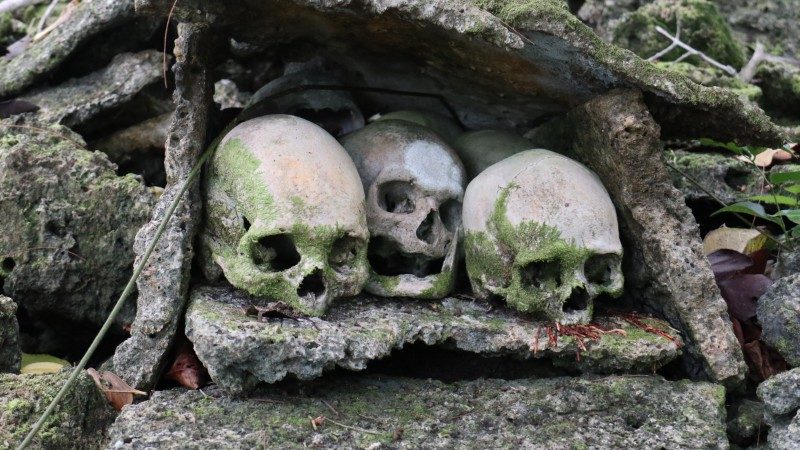
A coral tomb at Skull Island.
As we approach Skull island, our guide, Daniel, stands up in the boat and begins to shout. He’s calling to the spirits on the island, asking for permission to land and for access to this sacred site. Before long he nods and we slip over the edge of the boat, shoes held aloft until we reach dry land.
All the locals in our group are subdued as we follow the path to the skulls and gravesites at the top of the mound. When we pass a vessel of still water, he advises us not to disturb it. “The spirits are in there,” he whispers and I am convinced it’s not a ruse to entertain the tourists. My friend Barbara looks scared to death, clearly sensing the energy of her ancestors. Many times, my guide has told the story of a man he had recently met, an American medium, who was possessed by a spirit and pushed from the island into the water; the group is treading very carefully.
As I tiptoe around the island, Daniel tells me about the history of the cannibals and headhunting in the region. Previously just a part of tribal life, when the missionaries came in the early 1900s and converted the islanders to Christianity, the practice of headhunting was discouraged and so the skulls of the chiefs and warriors of the Roviana Lagoon were moved to this island to be protected by the people of the nearby village.
Cautioned not to touch anything, I stare at the collection of skulls, some covered in bright green moss, others perfectly preserved in tombs made of rock and coral. I love that the locals allow tourists to visit their sacred sites and want to teach the world about the lives of these fierce men who once arranged marriages between villages, guided their people through the trials and tribulations of daily life, and, when necessary, led them into war.
5. Gizo
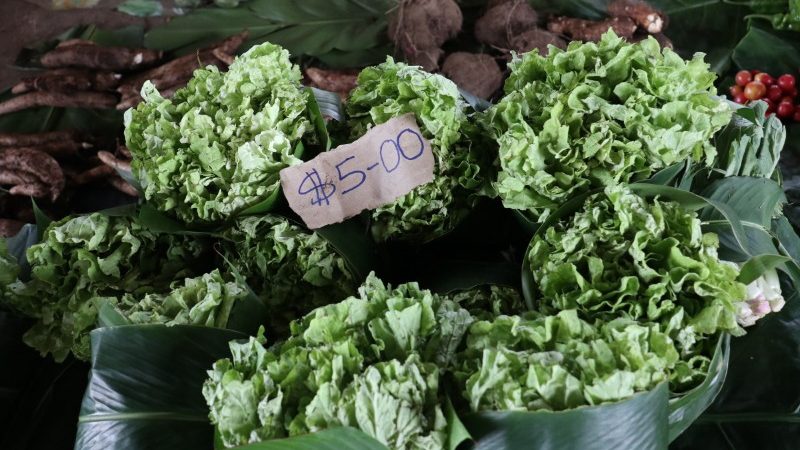
Fresh produce at the Gizo market.
The banana boat glides up alongside Fatboys and we are greeted with necklaces of fresh flowers and sweet lime juice drinks before being led along the overwater path to the villas. I feel like we have landed in yet another paradise. Coconut trees and endless ocean views sincerely delight me and the accommodation is simple but luxurious.
The natural cross ventilation in my room from the louvred windows is glorious. Despite the wind blowing wildly all night and the fan whipping around on its stand, I love waking up within the cocoon of my mosquito net. The snorkeling and diving around Gizo is world class, but the restaurant with it’s bookshelves and pool table tempt me into a day of rest.
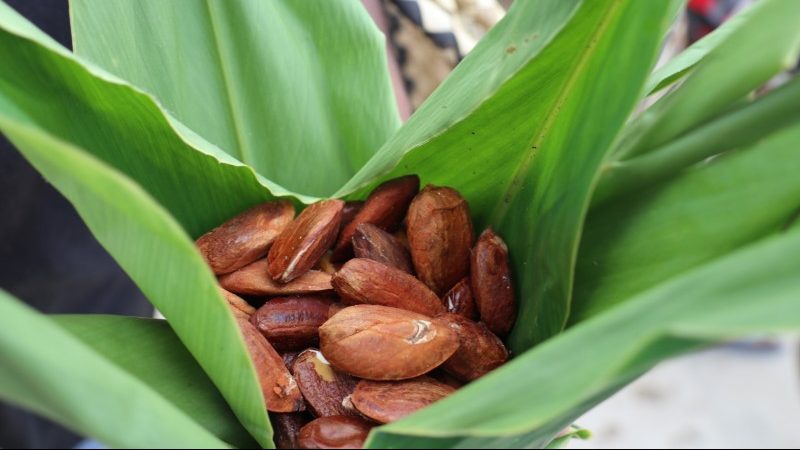
Ngali nuts
On my last morning in the Solomons, I stop at Gizo’s bustling waterside market. The open marketplace is strewn with people selling their produce from huge baskets weaved from green coconut leaves. I watch as an old woman deftly wraps a parcel of taro, her fingers holding the leaves together as she ties the string around the package, and the simple sustainability of this practice makes my heart sing. In the Solomons, people are still using the most sensible option for packaging, rather than relying on an over-abundance of plastic bags and wrappers. Peanuts in their shells and wrapped with twine, coconuts bound together in towering stacks, lettuce heads in groups of three, wrapped in pretty leaves, all look like the epitome of environmental awareness.
RELATED: IT TAKES A VILLAGE: HOW THE BALINESE SAVED A REEF AND THEIR COMMUNITY
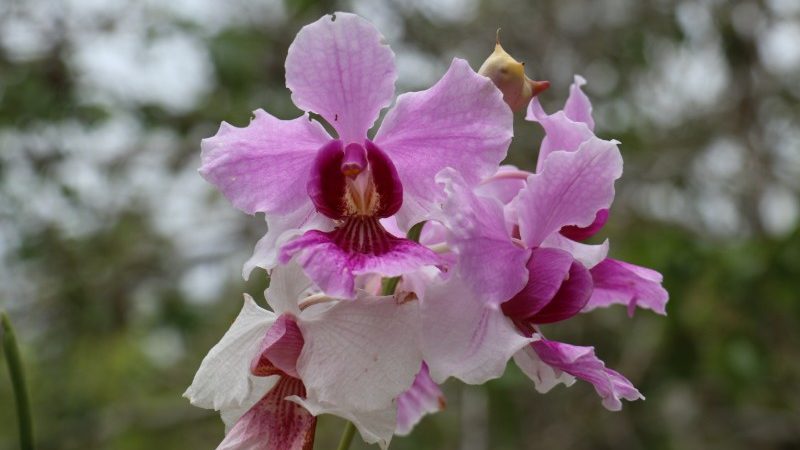
Orchids at Titiru
A few traveller tips to take with you:
- When you arrive in the Solomons, reset your body clock to ‘island time’ and prepare to relax. It’s hot and things happen a little more leisurely so relax, take off your watch, and put your devices away.
- You won’t need fancy clothes, even for the resorts, but be respectful and cover your shoulders in village areas. Culturally, there is an expectation that women will wear skirts, but not all do.
- If you need toiletries, batteries, etc, you will find basic supplies in Munda.
- Don’t miss the spectacular sunsets. They are a photographer’s dream.
Ready to experience this fascinating part of the world? Join us on an 8-day Solomon Islands Expedition now. Full details here.
Feature image by Ron van der Stappen C/O Shutterstock. All other images by Danielle Norton.

